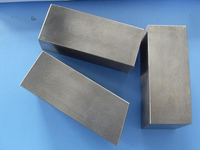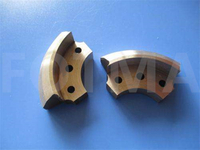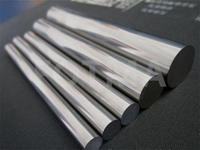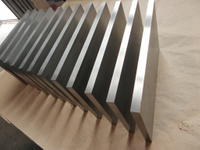Views: 6 Author: Site Editor Publish Time: 2020-06-29 Origin: Site
Concentrates
Most tungsten concentrates are processed chemically to ammonium paratungstate (APT). Secondary raw materials like (oxidized) scrap and residues are another important feed for chemical tungsten processing.
Wolframite concentrates can also be smelted directly with charcoal or coke in an electric arc furnace to produce ferrotungsten (FeW) which is used as alloying material in steel production.
Pure scheelite concentrate may also be added directly to molten steel.
Recycling
Recycling is an important factor in the world’s tungsten metal supply. It is estimated that today some 30% is recycled, and the tungsten metal processing industry is able to treat almost every kind of tungsten-containing scrap and waste to recover tungsten and, if present, other valuable constituents.
Contaminated cemented carbide scrap, turnings, grindings and powder scrap are oxidized and chemically processed to APT in a way similar to that used for the processing of tungsten metal ores. If present, cobalt, tantalum and niobium are recovered in separate processing lines. Other tungsten containing scrap and residues might require a modified process.
Clean cemented tungsten carbide inserts and compacts are converted to powder by the zinc process (treatment with molten zinc which is dissolved in the cobalt phase and is then distilled off, leaving a spongy material which is easily crushed). This powder is added back to the manufacture of ready-to-press powder. By this process, not only tungsten carbide but also cobalt, tantalum carbide and other carbides are recycled.
Recycling of tungsten metal in high speed steel is high, and a typical melt contains 60 to 70% scrap, including internally generated scrap.
On the other hand, recycling in such applications as lamp filaments, welding electrodes and chemical uses is low.
Although tungsten seems to be relatively harmless to the environment, environmental concerns have led to an increasing recycling rate, especially when the material contains other metals in addition to tungsten. Recycling is always more environmentally friendly and usually more economic than waste disposal.
Toxicity
Tungsten metal and its compounds show generally low toxicity compared to most other metals and their compounds.
Intermediates
Ammonium Paratungstate (APT)
APT [(NH4)10W12O41 . 5 H2O] is the main intermediate and also the main tungsten metal raw material traded in the market. APT is usually calcined to yellow or blue oxide (WO3 or W20O58).
Tungsten Metal Powder (W)
Yellow or blue oxide is reduced to tungsten metal powder by hydrogen. The reduction is carried out in pusher furnaces, in which the powder passes through the furnace in boats, or in a rotary furnace, at 700-1000°C.
Tungsten Carbide (WC)
Most of the tungsten metal powder is converted to tungsten carbide (WC) by reaction with pure carbon powder, e.g. carbon black, at 900 - 2200°C in pusher or batch furnaces, a process called carburisation.
Tungsten carbide is, quantitatively, the most important tungsten compound. Because of its hardness, it is the main constituent in cemented carbide.
Cast Carbide
By melting tungsten metal and tungsten monocarbide (WC) together, a eutectic composition of WC and W2C is formed. This melt is cast and rapidly quenched to form extremely hard solid particles having a fine crystal structure. A tough, feather-like structure is preferred over the brittle, blocky structure obtained by insufficient quenching. The solids are crushed and classified to various mesh sizes.





